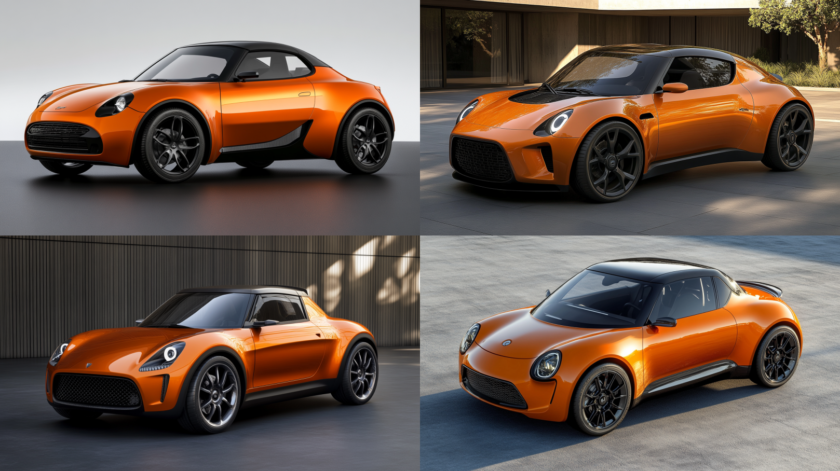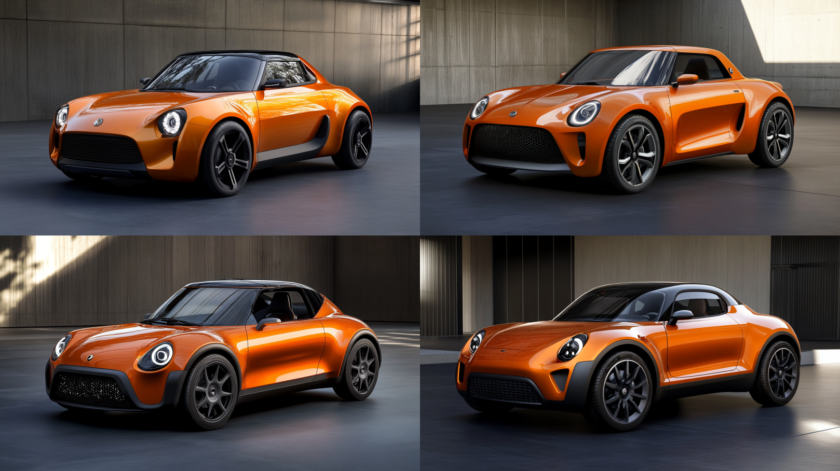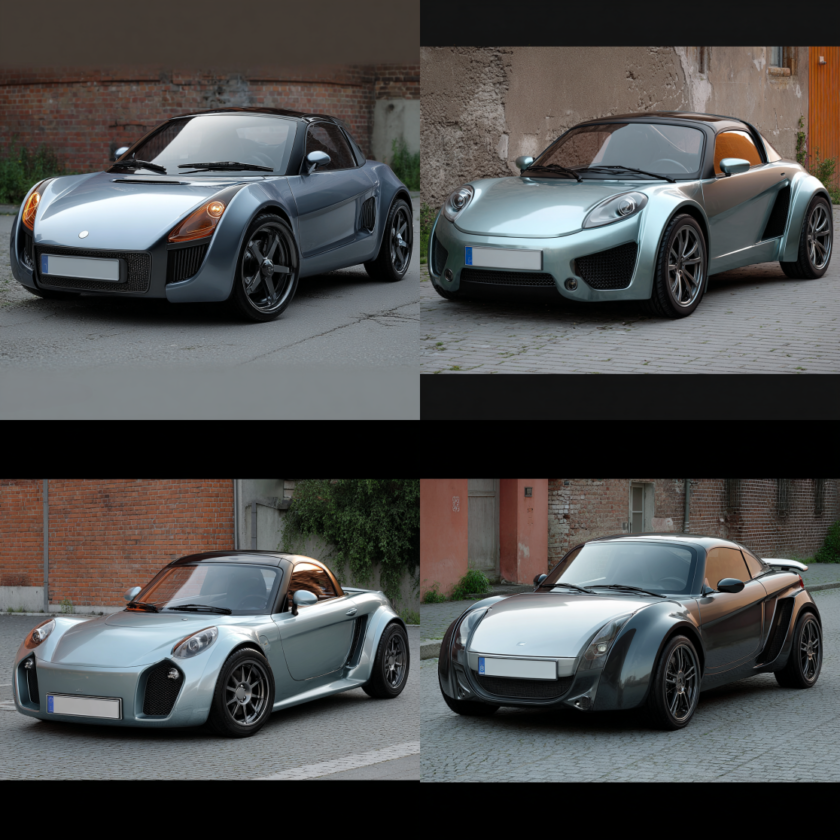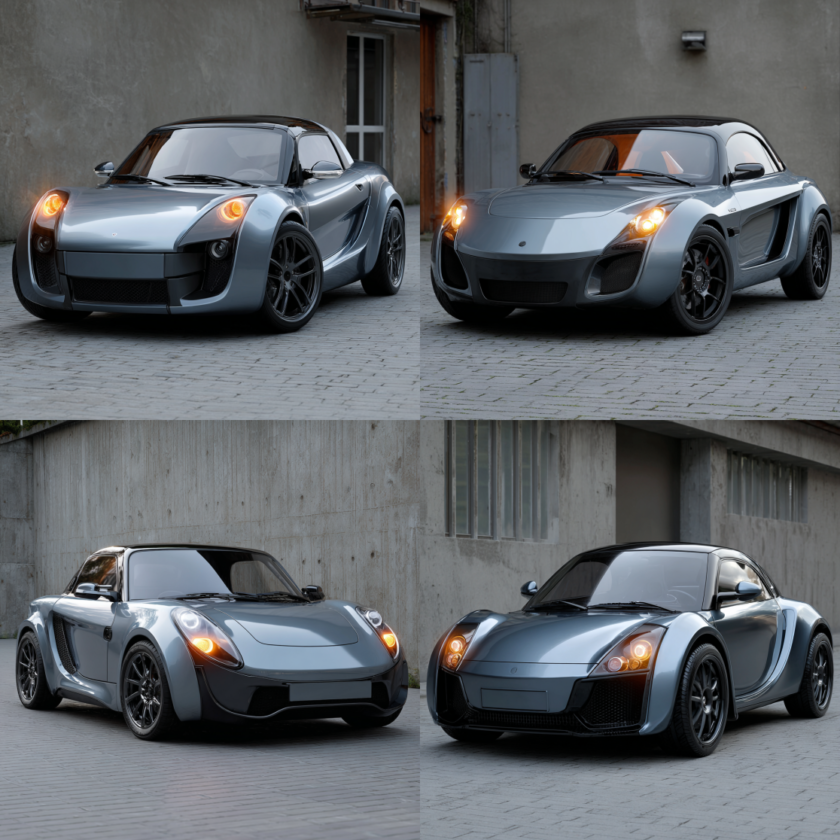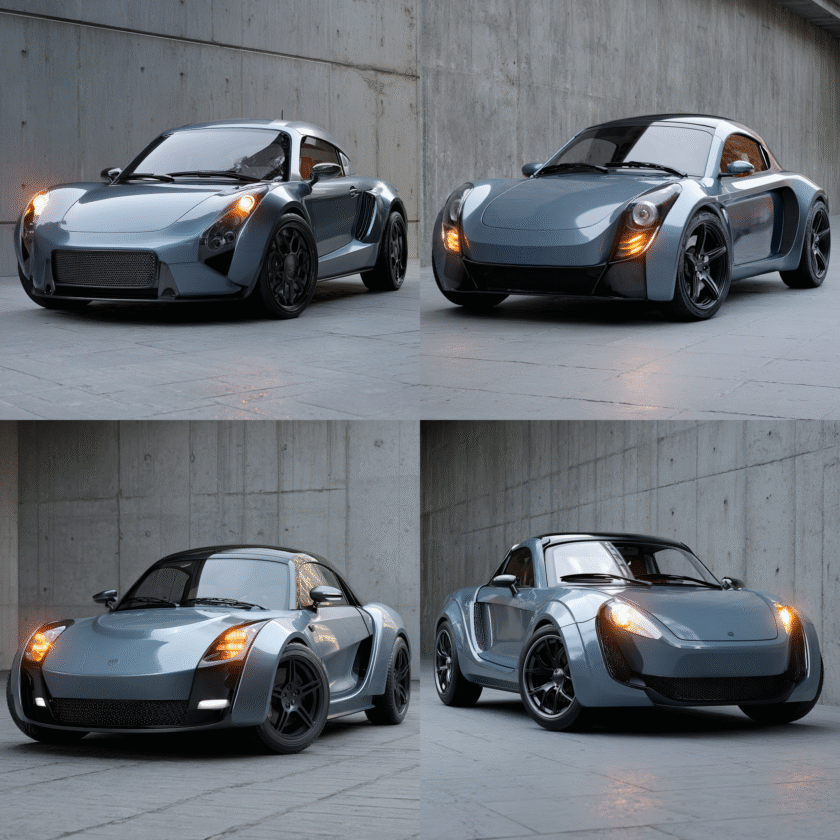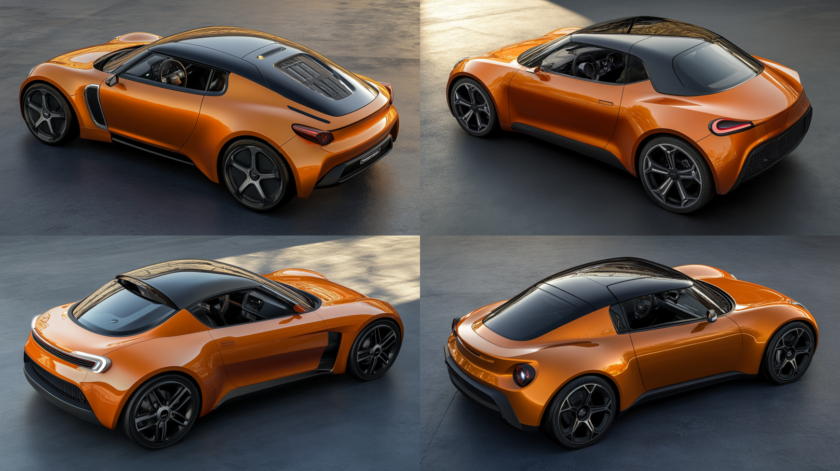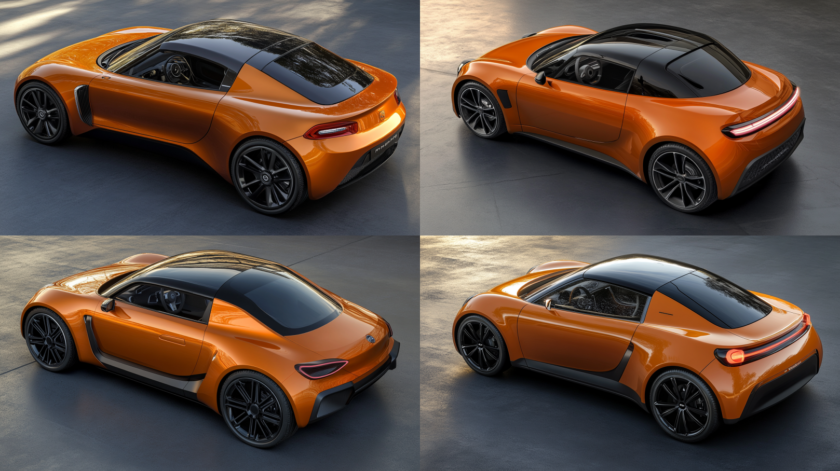
In the mid-1990s, Smart — a joint venture between Swatch and Mercedes-Benz — began exploring the idea of expanding its concept of urban intelligent transport. After launching the Smart City-Coupé (later renamed Fortwo) in 1998, the next logical step was to create a car that combined compactness with driving excitement.
Thus, in 2003, the Smart Roadster was born — a lightweight, low-slung, rear-wheel-drive sports car that challenged conventions in the world of micro-performance cars. Its design was inspired by classic 1960s British roadsters (like MG and Triumph), yet it was completely modern: plastic body panels, modular structure without a central tunnel, a tiny 698cc turbocharged engine, and rear-wheel drive.
There were two main versions of the Roadster:
Roadster – with a classic open roof
Roadster–Coupé – featuring a longer rear glass section with a shooting-brake-like profile
🌍 Success and Discontinuation
The Smart Roadster quickly became a cult favorite in Europe — especially in the UK, Germany, and the Netherlands. However, it wasn’t without issues: the robotic gearbox was sluggish, and electronics could be unreliable. Despite passionate fans, Smart couldn’t justify the high development costs and low profits, leading to the model’s cancellation in 2005.
In total, over 43,000 units were produced, including special editions like Brabus, Bluewave, Ultimate, and Racing Edition.
💬 Legacy
Today, the Smart Roadster is regarded as one of the most intriguing and underrated micro-sportscars of the early 2000s. Its cult status continues to grow — thanks to its uniqueness, lightness, and pure driving spirit.
Read too: Mitsuoka Mc-1 history: futurism in small
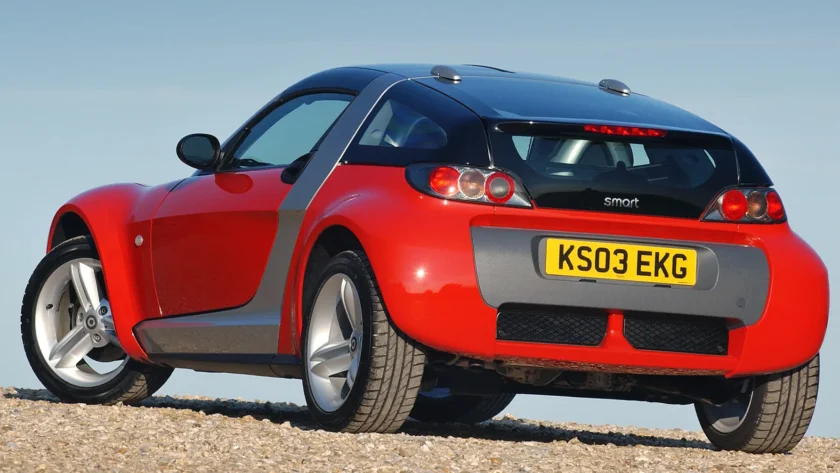
Smart Roadster - Specifications Type of Vehicle: Compact two-seater sports car Available in: Roadster and Roadster-Coupé versions Layout: Rear mid-engine, rear-wheel drive Body: Plastic panels over steel Tridion safety cell Engine: Type: 3-cylinder inline, turbocharged Displacement: 698 cc (0.7 L) Power output: Standard: 61 hp (45 kW) Roadster Coupé / High Output: 82 hp (60 kW) Brabus: 101 hp (75 kW) Torque: up to 130 Nm Fuel system: Multi-point fuel injection Transmission: Type: 6-speed automated manual Modes: Softouch (auto), Softip (manual shift) Drive: Rear-wheel drive Performance: 0–100 km/h: ~10.9 s (61 hp) ~9.5 s (82 hp) ~8.9 s (Brabus, 101 hp) Top speed: up to 190 km/h Fuel consumption: ~5.0 L/100 km (mixed) Dimensions & Weight: Length: 3,427 mm Width: 1,615 mm Height: 1,192 mm Wheelbase: 2,360 mm Curb weight: ~790–850 kg Notable Features: Very low center of gravity Detachable roof panels or folding soft top Modular, customizable body Compact, agile chassis tuning Brabus versions featured sportier styling and interior trim
Read too: The Electric Car Time Forgot: Zagato Zele history
New version of Smart Roadster
The design of the new Smart Roadster, like the design of its old predecessor, is not distinguished by any futuristic features. The round headlights and smooth shapes of the new Smart Roadster 2025 emphasize the classics. Also on the first car in image number 1, you can see an air intake that is a direct reference to the original model. In addition to futurism, AI also added completely new features to the new Smart that were never in the original design but are found in new Smart projects such as the new #1.
Read too: New Bertone Runabout 2025 car analysis: another masterpiece from a unique Italian brand
Also, AI presented us with another masterpiece option that already has the most futuristic design. Which has the forms of the old smart that we all loved so much, including:
- The hood line completely repeats the original
- Rear air intake
- Small radiator grille
However, there are also very non-standard options in its design. For example, the new Smart Roadster 2025 received more air intakes and sportiness
Read too: Lamborghini Cala history: a prototype in the shadow of the Gallardo
AI experimented with the back of the car, and it shows. Here you can find both the Zagato style and the currently fashionable light bars similar to the Rivian or even a back that looks like a Camaro.
Future Classics: 8/10
Brand Recognition: 8/10
Design Modernity: 10/10
